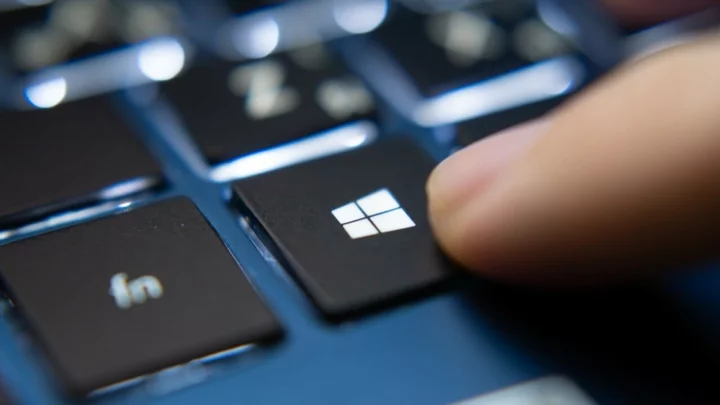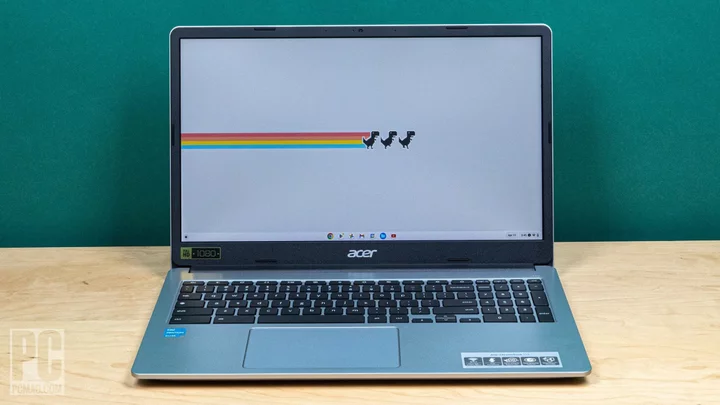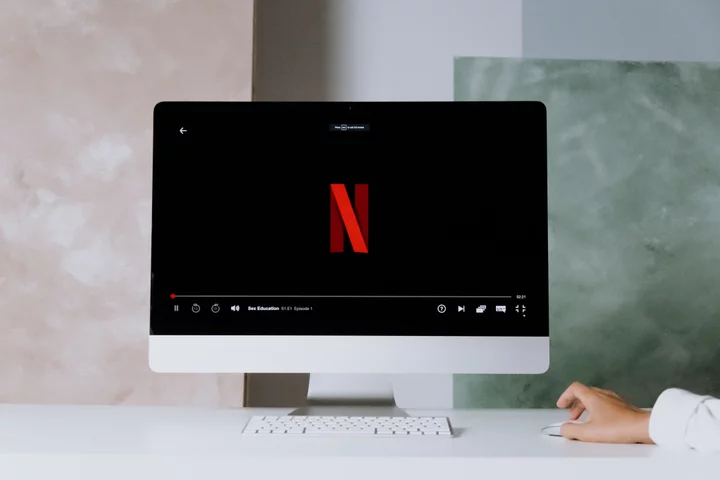Windows 11 is the latest and greatest operating system from Microsoft, but it will be a few years before it surpasses Windows 10 as the most popular desktop OS in the world. Despite the company's desire to get us all to upgrade, Microsoft has made it difficult with high requirements many users can't meet with their current PCs.
If you're sticking with Windows 10 instead of buying a new computer, you have until 2025 before Microsoft begins to wind down official support. So there's still plenty to learn in order to get the most our of your aging operating system.
Whether you don't consider yourself a power user or made the jump from macOS, these tips will help you get more out of your Windows 10 experience. Some of these tricks originated from an older generation of Windows, while others are new to this iteration.
1. Try the Secret Start Menu
(Credit: PCMag / Microsoft)If you're a fan of that old-school (i.e. non-tiled) Start menu experience, you can still (sort of) have it. Right-click on the Windows icon in the bottom-left corner to prompt a textual jump menu with a number of familiar destinations, including Apps and Features, Search, and Run. All these options are available through the standard menu interface, but you can access them quicker here.
2. View Your Desktop in One Click
(Credit: PCMag / Microsoft)You don't have to minimize all your open windows just to look at the desktop. There's a secret button in the bottom-right corner of the taskbar. Don't see it? Look all the way to the bottom and right, beyond the date and time. There, you'll find a small little sliver of an invisible button. Click it to minimize all your open windows at once; click it again to bring everything back.
There's also the option to have windows minimize when you hover over this button versus clicking. Select your preference in Settings > Personalization > Taskbar, then flip the switch under Use peek to preview the desktop.
3. Change Windows Search Settings
(Credit: PCMag / Microsoft)If PC searches are taking too long in Windows, narrow things down under Settings > Search > Searching Windows. Set search to Classic, which only applies searches to your libraries and desktop. The Enhanced option indexes your whole computer, which can take longer and uses more power. You can further narrow your search by marking certain folders as excluded.
4. Shake Away the Mess
(Credit: PCMag / Microsoft)Windows 7 users should know this little trick. If you have a display full of windows, clear the clutter by grabbing the top of the window you do like and "shaking" it on the screen to minimize all the other windows. Suddenly having shaker's remorse? Shake again and the windows will return.
5. Enable Slide to Shut Down
(Credit: PCMag / Microsoft)Those with Windows 10 tablets or touch-screen computers have a cool slide-to-shut down feature, but the capability is hidden within any PC running the operating system. There are a few different ways to run the feature as an executable file, but creating a desktop shortcut probably makes the most sense here.
Right-click on the desktop and select New > Shortcut. In the ensuing pop-up window, type SlideToShutDown as the location of the file. Rename the file and click Finish to create a clickable icon on your desktop. Now right-click the file and select Properties. Enter a key in the Shortcut key box and click Apply.
You can then double-click on the shortcut or enter your keyboard shortcut to prompt a pull-down shade to appear. Use your mouse and drag the shade down to the bottom of the screen to turn off your computer. Keep in mind that this is a shutdown, not sleep.
6. Enable 'God Mode'
(Credit: PCMag / Microsoft)This may be a little too niche for most users, but if you are a power user or IT professional who wants access to all of Windows' control panels from one folder, God Mode is for you. Right-click on the desktop and select New > Folder. Re-name the new folder with this bit of code:
GodMode.{ED7BA470-8E54-465E-825C-99712043E01C}
To enter God Mode—or the Windows Master Control Panel shortcut, as it is officially called—simply double-click the folder and go nuts.
7. Drag to Pin Windows
(Credit: PCMag / Microsoft)We all multitask, and Windows 10 makes it simple by letting you pin windows in different parts of the screen. Grab any window and drag it to the left or right boundary of the screen and it will "fit" to that half of the screen. You can also move a window to any of the four corners of the screen to lock it to that corner.
You can prompt similar behavior with a selected window by combining the Windows key and any of the directional arrows. For instance, move a window to the left side of the screen with the Win + left arrow shortcut. Then use Win + up or down arrow, and the window will snap to the corner.
8. Quickly Jump Between Virtual Desktops
(Credit: PCMag / Microsoft)Want to separate your desktop between work and personal apps? You can do that by setting up virtual desktops. Just click the Task View icon in the taskbar (the one that looks like small boxes) to see all your open windows and desktops.
You can then drag any of them over to where it says New desktop, which creates a new virtual desktop. Once you click out of Task View, you can toggle between virtual desktops by pressing the Windows key + Ctrl + right/left arrows.
9. Customize the Command Prompt
(Credit: PCMag / Microsoft)If you like to dig into the innards of Windows with the Command Prompt, you'll be happy to know you can customize the tool itself. Open the Command Prompt, right-click on the window's top bar, and select Properties to personalize your experience.
The Properties window allows you to change the controls, font, layout, colors, and cursor within the Command Prompt. You can also turn the window transparent by opening the Colors tab and moving the Opacity slider. This lets you code while simultaneously observing the desktop.
10. Silence Notifications With Focus Assist
(Credit: PCMag / Microsoft)Focus Assist gives you greater control over the notifications that pop up on your PC. Head to Settings > System > Focus Assist and turn off the most annoying notifications so you can work in peace. You can even set Focus Assist to turn on at certain times, only let specific notifications through, or work under specific conditions. Consult our Focus Assist guide for more on customizing notifications.
11. Unlock Kaimoji and Symbols
(Credit: PCMag / Microsoft)Hit Windows Key-Period(.) to pop up an expanded bottom-right menu of emoji, "Kaimoji" characters built from Unicode characters, and a wide array of miscellaneous symbols.
12. Stop Typing, Start Dictating
(Credit: PCMag / Microsoft)Microsoft loves speech recognition when it comes to Windows and Office. At any time you can use the Win + H hotkey combination to pop up a box that records your voice through your PC's microphone and dictates the speech in your current text field. You'll still need to type manual punctuation, but save yourself some typing by dictating emails, messages, and more.
13. Dark Mode and Light Mode
(Credit: PCMag / Microsoft)Windows 10 gives you a significant amount of control over color themes. Open Settings > Personalization > Colors and you can set the operating system to either dark mode or light mode. These themes change the color of the Start menu, taskbar, action center, File Explorer, settings menus, and any other compatible programs.
There is also a custom option that will let you set one theme for Windows menus and another for apps. Want a little more color? There are swatches of color themes available to choose from that can help your menus and taskbars really pop.
14. Copy and Paste in Bulk
(Credit: PCMag / Microsoft)We all use the Windows clipboard to cut and paste, but did you know you can save multiple items at once and paste across devices? Use the command Win + V to view recent clipping saved to the clipboard. Go to Settings > System > Clipboard to control this feature and to sign into your Microsoft Account for cross-device usage.
15. Take Better Screenshots
(Credit: PCMag / Microsoft)For years, the Snipping Tool was the only screen capture software built into Windows, but the Snip & Sketch app has changed screenshots in Windows 10 forever. Use the shortcut Shift + Win + S to choose between rectangular, freeform, window, or full-screen snip. You will then find the tool has a built-in image editor separate from Microsoft Paint.
16. Test Files and Apps in the Sandbox
(Credit: PCMag / Microsoft)Windows 10 Pro users have an extra asset to protect them against dangerous apps and files. If you enable Windows Sandbox inside the Control Panel, it will create a virtual instance of Windows inside Windows. You can then safely open anything you're not sure about before introducing it to your actual Windows installation. Once you close out of Sandbox, everything inside it goes away without hurting your computer.
17. Xbox Game Bar
(Credit: PCMag / Microsoft)Using the Win + G command, you can pull up the Xbox Game Bar, which lets you record and broadcast your gaming sessions, control your audio, monitor CPU usage, link third-party accounts, view your Xbox friends list, and do so much more.
You can also go to Settings > Gaming and configure custom keyboard shortcuts for turning your microphone, screen capture, recording timer, and more on and off while gaming. There are even settings for capturing gameplay, turning on Game Mode for increased performance, and monitoring your network.
18. Open Task Manager Faster
(Credit: PCMag / Microsoft)Back in the day, Ctrl + Alt + Delete was the go-to command if your PC was acting up. If you're sick of having to then select Task Manager from the menu that appears, there's a quicker option. Use the keyboard shortcut Ctrl + Shift + Esc to immediately open the Task Manager and make things a little easier.
19. Press Pause on Updates
(Credit: PCMag / Microsoft)We all know updates are important. They give your OS the latest features, security patches, and more. But sometimes you just want Windows to leave you alone without those incessant pop-ups. Go to Settings > Updates and Security > Windows Update and you can pause upcoming feature updates. Home and Pro users will have different options, but here's a rundown.
20. Cloud Reset
(Credit: PCMag / Microsoft)Need to reset your Windows 10 PC? Microsoft's cloud-based reset feature should help users when Windows crashes and there's no recovery drive or USB drive to reset the operating system. This remote option re-installs the same version of Windows previously running, but it will still require removing all your apps and personal files. Find this option under Settings > Update & Security > Recovery.
21. Take Measurements
(Credit: PCMag / Microsoft)Windows has several built-in apps that may look useless but offer helpful hidden features. For instance, the Calculator app can also calculate the difference between two dates and convert basically any unit of measure, including time, energy, temperature, mass, and even currency.
The Alarms & Clock app can calculate the time difference between two locations, even into the future. Open the app, click the Clock tab, and select the + icon at the bottom to add locations. Click the Compare icon to open a timeline. As you scroll across the timeline, time changes on the map points, allowing you to keep track of time differences more easily.
22. View File Extensions
(Credit: PCMag / Microsoft)By default, Windows hides file extensions in File Explorer, requiring you to dig into the file's properties to see if it's a .jpg or .png file. But you can set it so Windows shows you the file extension automatically. Open File Explorer and click View > Options and open the View tab.
Scroll down to the option for Hide extension for known file types and uncheck the box. Click Apply, and now file types will be listed at the end of all file names inside File Explorer.
23. Cut Down on the Recycle Bin
(Credit: PCMag / Microsoft)When you delete a file in Windows, it is sent off to the Recycle Bin where it sits there until you decide to delete it permanently. However, if you want to better manager your files, you can take control of the Recycle Bin to limit how much data can be stored within or have it automatically empty after a set amount of time.
Right-click the Recycle Bin on your desktop, then choose Properties. Here, you can set a maximum size for the bin or change it so that items are immediately deleted instead of being stored in the Recycle Bin.
For additional options related to freeing up disk space, you can open Settings > System > Storage and select the Configure Storage Sense or run it now link. Change the Delete files in my recycle bin if they have been there for over drop-down menu to one, 14, 30, or 60 days.
24. Don't Sleep, Hibernate
(Credit: PCMag / Microsoft)When you want to power down your computer after use, Windows gives you the choice of Sleep, Shut Down, or Restart from the Start menu. However, there's another power option called Hibernate that you first need to unhide before choosing it.
Hibernate is a middle ground between Sleep and Shut Down that uses less power than Sleep but doesn't start up as fast (though it's still faster than shutting down). The feature was intended for laptops, so use it when you won't be able to charge your computer for an extended time.
To add this option to your power settings, head to Settings > System > Power & sleep, then choose the Additional power settings link. Click Choose what the power buttons do, then hit Change settings that are currently unavailable. You should now be able to select Hibernate, then click Save changes and the Hibernate option will be available from the Start menu.
25. Set New Start Menu Shortcuts
(Credit: PCMag / Microsoft)Have you ever noticed the shortcut options that Windows offers when you open the Start menu? Just above the power button, you should have links to Settings, Documents, and Pictures. However, if you don't find those options useful, Windows lets you change them.
Head to Settings > Personalization > Start and select the Choose which folders appear on Start link. You can then add a shortcut for File Explorer, Downloads, and a few others.









